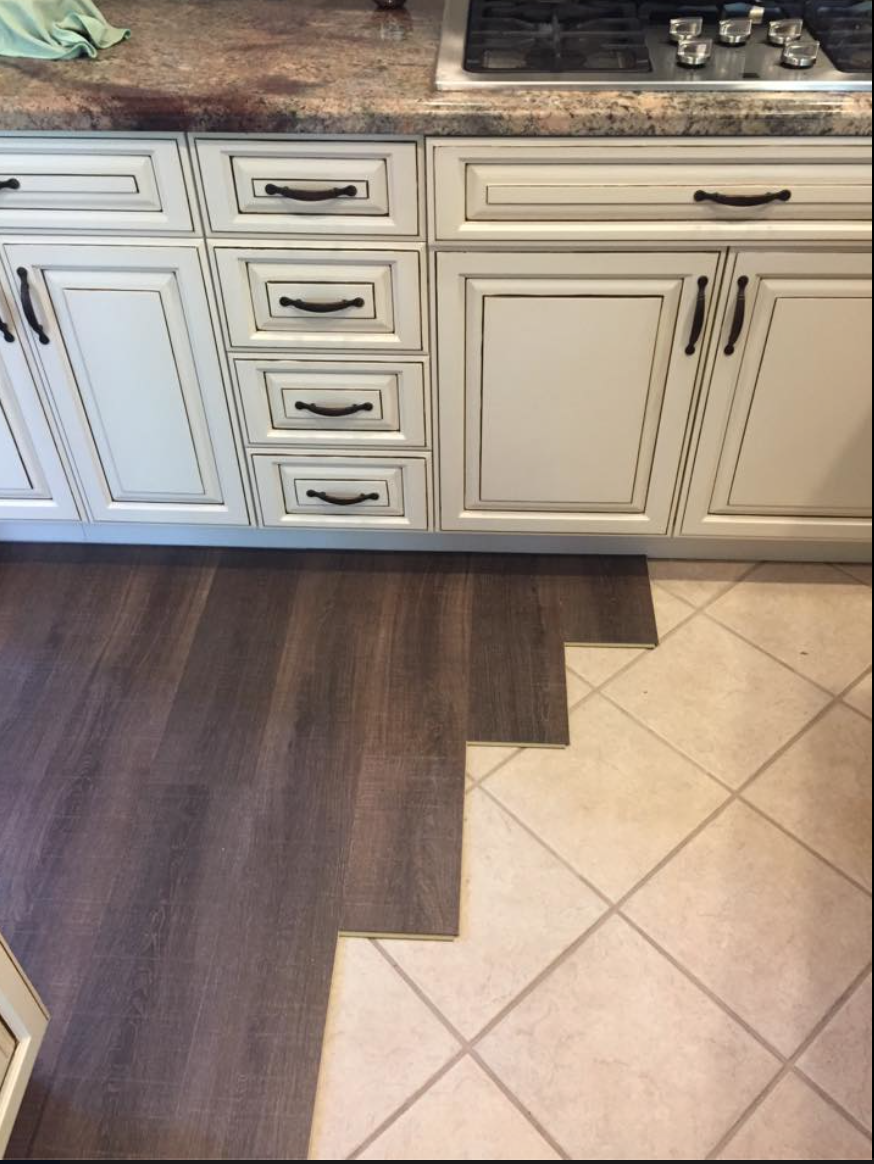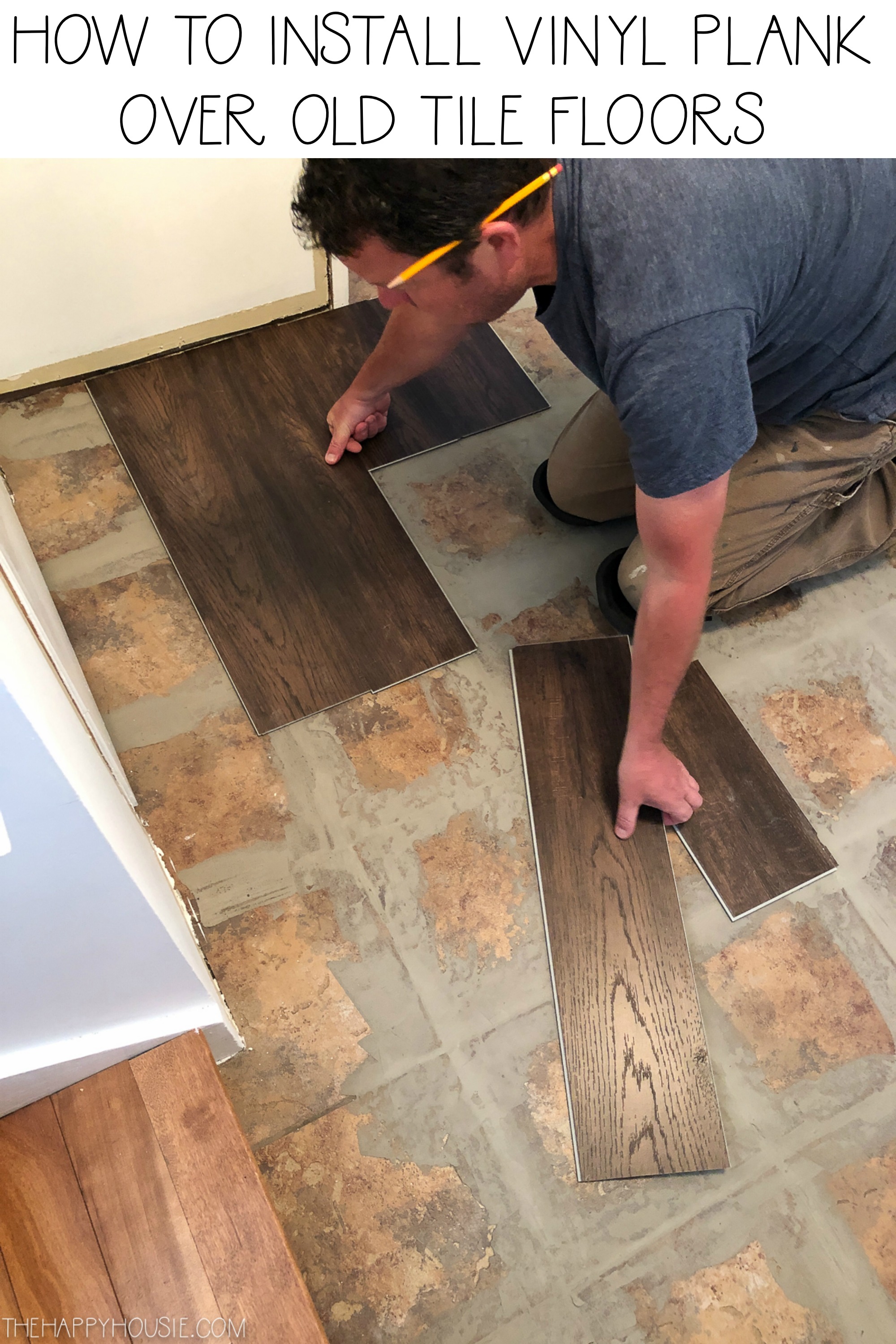Yes, you can install wood floors over tile if the existing tile is well-adhered, smooth, and level. This approach can save time and reduce renovation debris.
Choosing to install wood floors over existing tile has become a practical solution for homeowners seeking an update without the mess and expense of a full demolition. With advancements in flooring technology, engineered wood and laminate options offer the flexibility to be installed over a variety of subfloors, including tile.
This method of flooring installation not only streamlines the process but also retains the integrity of your existing flooring. It’s crucial to ensure that the tile is in good condition, firmly attached, and level before proceeding with the wood floor installation. There should be no loose tiles or significant height differences. Preparing the surface may involve leveling out the tile with a suitable underlayment. This approach can transform your space with the warmth and elegance of wood flooring, all while minimizing project complexity and maintaining a cost-effective budget.

Introduction To Flooring Overlays
The idea of laying wood floors over tile is quite popular. It promises a fresh look without removing existing tile. Subfloors usually must be flat. This creates a stable base for the wood. Before starting, it’s essential to check if the tile is even and secure. Some floors might be too damaged. They need repair before placing wood on top.
Preparing the surface is key to success. Cleaning and leveling are critical steps. A moisture test is also important. Too much moisture could damage wood. Once the tile passes all checks, an interlay can be placed to support the new wood. This ensures a smooth installation process.
| Step | Action Required |
| 1 | Examine Tile Condition |
| 2 | Surface Leveling |
| 3 | Moisture Testing |
| 4 | Apply Interlay Material |
Pre-installation Considerations
Assessing the current tile floor is a key step. Tiles must be solid, without cracks. Loose or broken tiles are a no-go. A level and stable subfloor is a must for wood floors. Unstable floors can cause wood planks to move or squeak.
Height differences bring challenges. Careful measuring is vital. Doors might need trimming. Furniture heights may change too. Choosing the right wood flooring is next. Some wood floors stick better to tile than others. Thicker woods provide more stability. Thinner woods might need extra subfloor prep.
| Aspect | Consideration |
|---|---|
| Tile Condition | Must be solid, no cracks or movement |
| Subfloor | Requires levelness and stability |
| Height Differences | Crucial to measure and plan |
| Wood Type | Select appropriately for overlay |
The Installation Process
Wood floors over tile can indeed be a DIY project. Certain tools and materials are essential. You’ll need a moisture barrier and plywood underlayment. Also, gather tongue-and-groove planks, spacers, and a rubber mallet. For precise cuts, a saw is necessary. Don’t forget adhesive for a strong bond.
Laying wood floors begins with cleaning the tile thoroughly. Next, lay the moisture barrier. Then, place plywood underlayment. Keep expansion gaps around edges. Start laying planks from one corner. Use a rubber mallet to secure the planks. Take your time around doorways and transitions. These areas may need custom cuts for a smooth flow.
Ensuring a professional finish involves attention to detail. Use spacers to maintain expansion gaps. Trim the last plank appropriately. Finally, install the baseboard to hide gaps. Your new wood floor is ready.

Post-installation And Maintenance
Maintaining your new wood floors ensures they stay beautiful. Daily sweeping is essential. Use a soft-bristle broom. For deeper cleaning, a mildly damp mop works wonders. Prevent scratches by using furniture pads. Wipe spills immediately to avoid damage. Check the manufacturer’s cleaning recommendations. Sunlight can fade wood, so use curtains or blinds during peak hours.
Wood floors can face issues like cupping, warping, or scratching. Ensure the room’s humidity is constant; use a humidifier if necessary. Scratches can be buffed out; deeper ones may need professional sanding. Squeaky floors might signify loose boards. Tightening them avoids further damage.
Situations requiring expert attention are often serious. Notice boards lifting or cracks widening, call a professional. They have the right tools and experience. Unusual discoloration or persistent squeaks also warrant a call. Trust the pros to protect your investment.
Pros And Cons Of Wood Over Tile Installation
Putting wood floors over tile is a smart choice for many. Your existing tile provides a solid foundation, making the wood installation smoother. No need for tile removal saves you time and money. Wood offers a warm and classic look that many homeowners love.
On the flip side, consider the tile’s height and condition. If the tile is uneven or cracked, it could make your wood floor unstable. Be sure to check for moisture issues as these can ruin wood floors. Also, wood can be more costly than other options.
| Refinishing Tile | Overlaying with Wood |
|---|---|
| Keeps current tile look | Offers new style |
| Can be less expensive | May add value to your home |
| Less work involved | Can feel warmer and quieter |

Conclusion
Wrapping up, installing wood floors over tile is certainly possible. This DIY project can refresh your space without the hassle of removing existing tile. Remember to weigh the pros and cons, consider the height transition, and always start with a solid, level surface for the best results.
Embrace the opportunity to transform your home with a beautiful wood floor update!




